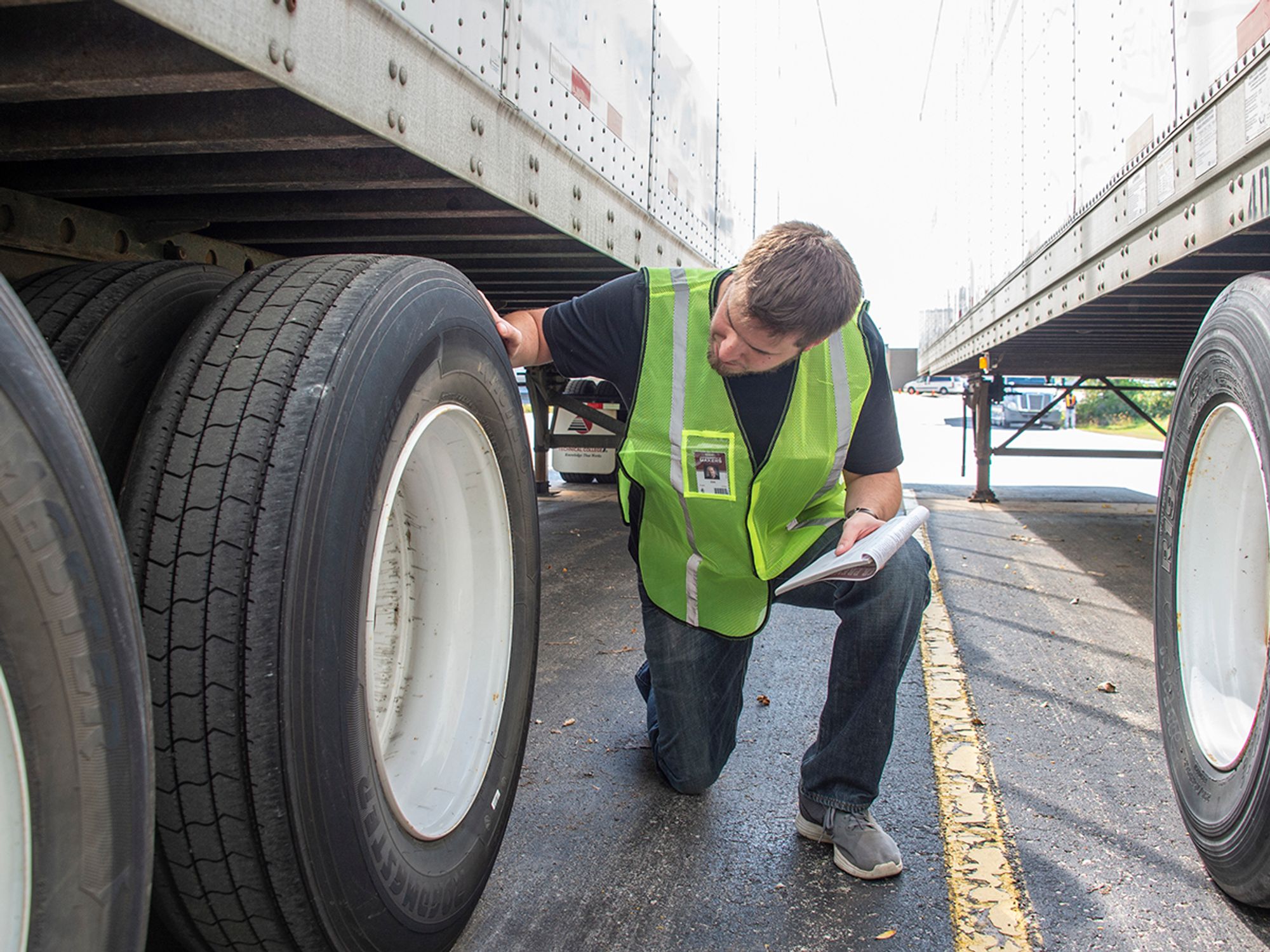Driver training: Tires

- Drivers must be sure that tires are properly inflated and clean, the lug nuts are tight, are free from cuts or punctures, and have adequate tread.
- As part of PM for tires, drivers should be trained to look for strange wear patterns, mechanical faults, mismatched duals, wrong tubes or flaps, unsuitable rims and wheels, incorrect mounting, objects lodged between duals, missing valve caps, and valve stem pull-through or shear.
- Drivers should be encouraged to make frequent inflation checks when tires are cold (before operation) by using an accurate tire gauge.
Drivers should know the inspection procedures for tires. Drivers need to be sure that the tire is properly inflated and clean, that the lug nuts are tight, that the tire is free from cuts or punctures, and that it has adequate tread. These inspection items are covered in basic commercial driver’s license (CDL) training. To make the driver more active in the preventive maintenance (PM) program and more proactive, the drivers should also be trained to check for:
- Strange wear patterns
- Mechanical faults
- Mismatched duals
- Wrong tubes or flaps
- Unsuitable rims and wheels
- Incorrect mounting
- Objects lodged between duals
- Missing valve caps Valve stem pull-through or shear
Fast stops and starts
Drivers need to understand that fast stops and starts will wear out tires before their time. Bouncing over chuck holes and curbs and running over debris in the road can also spell early death for a tire. Are drivers aware that bouncing over a chuck hole or curb can cause sudden tire failure, break or bend the rim, throw the wheels out of balance, misalign the wheels and the front end, and/or knock off hub caps?
Frequent inflation checks encouraged
Most importantly, encourage frequent inflation checks by drivers using an accurate tire gauge. Tires should be checked with a gauge when cold, before operation. Under-inflation, and the heat it generates, is the major cause of tire problems. Under-inflation leads to excessive wear, damage to the sidewalls due to extra flexing, and eventually complete failure if not corrected.
Over-inflation can also negatively affect tire life. An over-inflated tire is not distributing the weight it is carrying across its whole “footprint.” Only the center of the tire is bearing the weight, so this part of the tire will suffer from excessive wear.
Warn drivers that when gauging “hot” tires (tires that are warmed up from road friction) they will appear to be over-inflated. This is normal as tires will increase their pressure between 10 and 20 percent when hot. Because of this, instruct drivers to never let air out of a “hot” tire. Tires should be gauged when they are cold (before the vehicle has been used on the road), whenever possible.
“Thumping” tires with a hammer or tire club can tell the driver if the tire has air in it, but not how much. Thumping should be done during an enroute inspection when the tires are warm from running down the road and a gauge would not be accurate. Thumping can locate tires that are severely under-inflated, and in need of immediate repair. Drivers that get in the habit of gauging tires as part of a pre-trip inspection and thumping tires at every stop can significantly reduce blowouts, the most expensive and time-consuming type of tire failure.
Refilling tires safely
An important PM training point to share with drivers is refilling tires safely. Due to the hazards involved in filling tires, drivers and technicians must be familiar with, and follow, the safety rules involved in filling tires. Here are basic rules for drivers:
- Use a locking chuck,
- Do not be in line with the sidewall when filling, and
- Never refill a tire that has been run down the road at 20 percent or more below normal cold pressure.
Zipper failure
Tires that have been run down the road 20 percent or more below normal pressure could easily have sustained sidewall damage because of the extra flexing the tire may have done. This damage may not be evident until someone tries to bring the tire back up to normal pressure. The damaged sidewall can fail with little or no warning. There could be a second or two of “popping” just before failure, but you cannot count on that. This is known as a “zipper failure.” Tires that have been run down the road 20 percent or more below normal pressure must be removed from the rim, repaired, inspected, and refilled in a safety cage if deemed serviceable by a tire technician.
Take away!
Drivers that understand how to take care of their tires will be performing a valuable PM function while on the road. The more problems drivers can deal with proactively, the less the chances of breakdowns or major time spent performing repairs in your shop!
